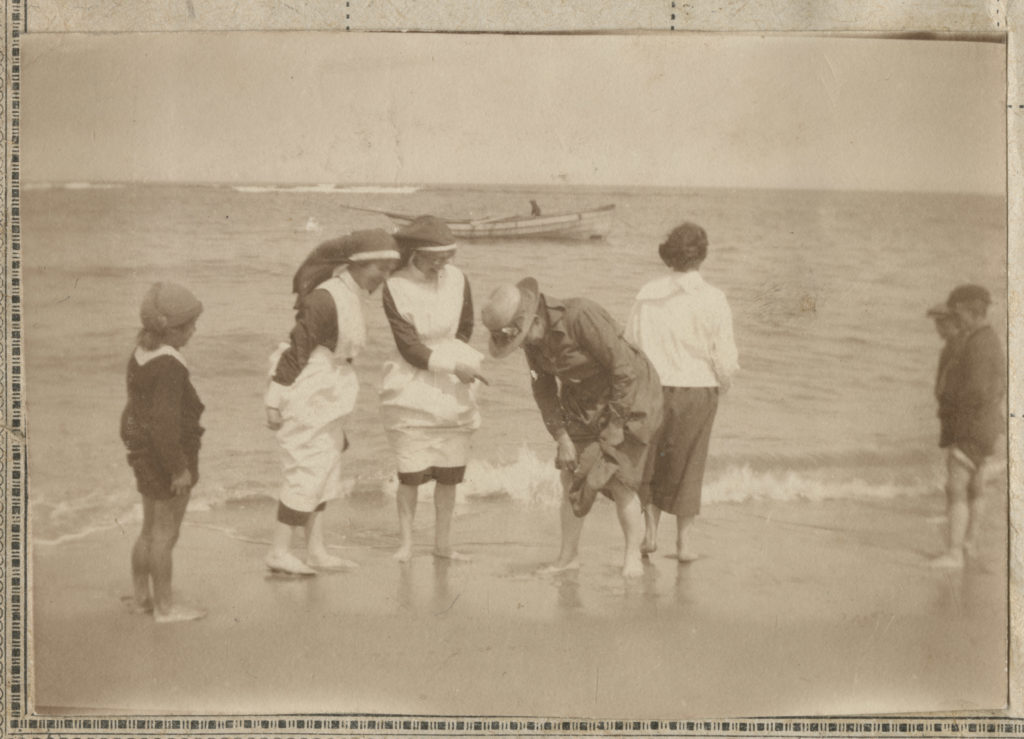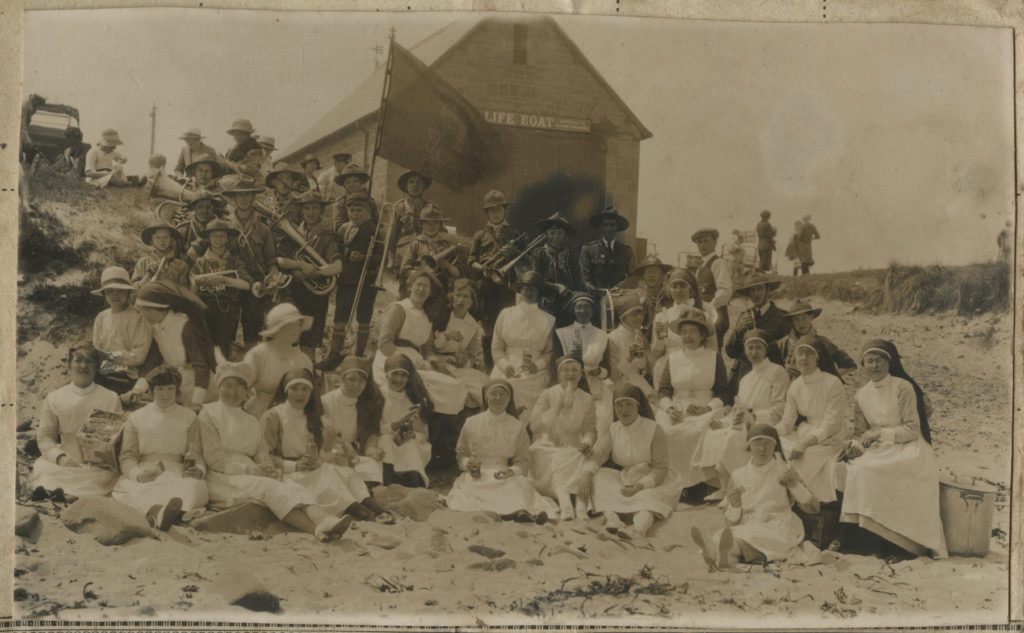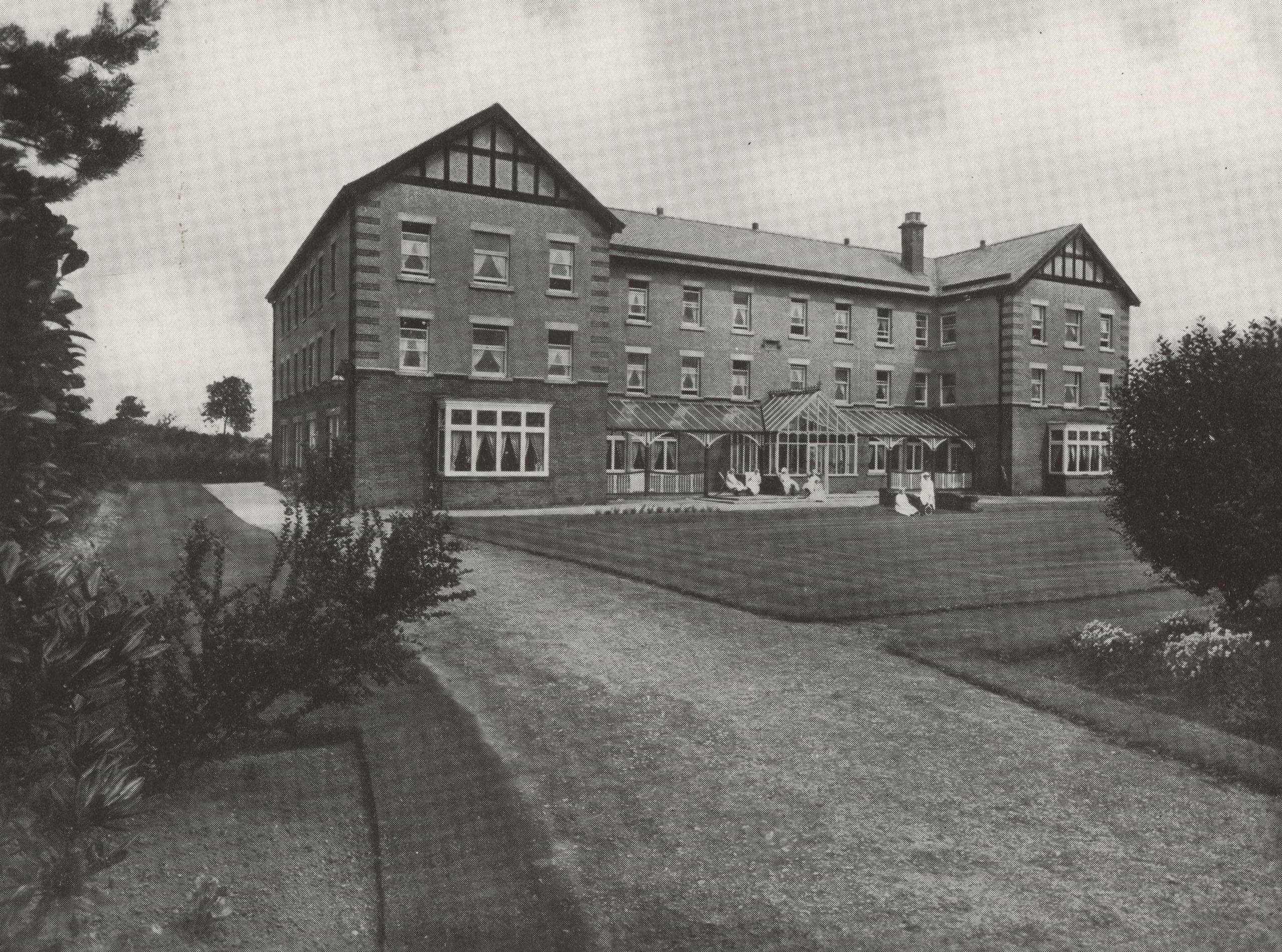
BERWICK ADVERTISER, 9 AUGUST 1918
FOOTBALLS FOR THE 7TH
The following letter has been received from Major Smail at the Front thanking Miss Cowen and Miss Herriot for the footballs for which they have collected subscriptions. We also publish a list of subscriptions; others are promised and the list is still open.
Friday, 2nd August, 1918.
Dear Miss Cowen and Miss Herriot, The footballs you so kindly raised subscriptions for duly arrived on Monday. They just arrived in the nick of time as most of ours were on their last legs, having been repaired several times. I kept one for my Company and sent the other three up to Battalions Headquarters for distribution to the other Companies. The C.O. (Lieut. Col. Liddell, M.C.) is much delighted that Berwick has remembered its own Battalion again. He told me on my return to the Battalion that the Guild of Aid was one of the few organisations in North Northumberland which seemed to remember the existence of the battalion. If, as I hope, you will keep this effort going, we will be more than ever indebted to the inhabitants of the old place. You have no idea how much pleasure the lads out here get out of a football. Besides pleasure it is good for their physical fitness.
Be sure you convey adequately to the subscribers our warmest thanks for their generosity. We are much indebted to you for undertaking the Secretarial duties. I am awfully glad you took the hint I gave you in this matter and so promptly too. I know lots of people would like to do something for the men out here, but have not much idea of what to send them. They can take it from me that they cannot do better than support your next appeal for funds.- Yours sincerely, H . R. SMAIL, Major.
NURSE KATE BISHOP RECIEVES
ROYAL RED CROSS DECORATION

Nurse Kate Bishop, daughter of Mr John Bishop, hon, Curator, Berwick Museum attended a Buckingham Palace on Wednesday week, when an investiture was held by His Majesty the King. The King in pinning on the decoration of the Royal Red Cross, warmly commended Miss Bishop on her bravery in the French hospitals, which were in May and June bombed by hostile air craft, and trusted she would long be spared to wear it.
Miss Bishop received her education at the Girls’ High School, and later went to Darlington Training College. She was keenly interested in V.A.D. work and found time to take this up while engaged as a school teacher at Bedlington. Fully qualified as a V.A.D. sister she offered her services some three years ago, and was almost immediately sent to France. At one of the large hospitals, known to every soldier who has come down from the “line” with a “Blightly,” her experiences have been of a varied character.
During the time she has been in France she has assisted in the nursing of many local soldiers and officers. After having endured the ordeal of repeated attack by cowardly air pilots and bombers, during which time the nurses and wounded were often compelled at night time to seek shelter in dug-outs in proximity to the Hospital, Miss Bishop was allowed a respite from her duties. She has spent most of the time in her native town of Berwick, where she has received the hearty congratulations and good wishes of a large circle of friends.
We trust Nurse Bishop will have an enjoyable time in Old Berwick, and that she will have many years of life after the war is over in which to wear her decoration.
LOCAL NEWS
Lord Armstrong suggests organised wild fruit picking by tame pickers, such as members of the Guild of War Agricultural Helpers, Boy Scouts and school children under control, and ask landowners to allow such pickers access to their hedges.
Volunteers in Section A, B, and C, if certified by the officer commanding their unit as being engaged whole time on agricultural work, may be relieved from attending half the prescribed number of drills during July, August, and Sept.
The Tweed salmon net fishing has again been very poor, and the only thing which can effect an improvement is a good spate. The sooner this comes the better, as the season is getting on. Fish continue to sell at the controlled figure, 3s per lb.
A leek planting competition took place at the Garden of Meadow House, Tweedmouth, on Wednesday last, the event being watched with considerable interest, Mr T. Steel, Berwick, was the prize-winner, planting 1800 leeks per hour, and the runner up was Mr Henderby, Spring Gardens, who put in 1600 in the same time.
The August Holiday was celebrated fairly quietly in the town, the restrictions on railway and motor travelling having had their effect. A goodly number however found their way to Mordington, where a Red Cross Fete afforded numerous and varied attractions. Others spent the day at the seaside, while a fairly representative crowd from Berwick, Tweedmouth and Spittal sought an afternoon’s relaxation in peaceful Norham and picturesque Horncliffe.

In the afternoon those about High Street were kept in fits of laughter for a time by the realistic antics of a Red Cross performer from Mordington, who on his “fiery steed” cantered about soliciting donations to the Red Cross Funds. Much amusement was caused when the “steed” slashed out in lifelike manner at those who did not contribute.
SCREMERSTON
A war memorial service was held at Scremerston Church on Sunday. There was a good attendance of members and others. The officers and men of the Volunteer Battalion at Seahouses were also present. The sermon was preached by the Rev. E. L. Owen, Vicar of St. Andrew’s Newcastle, in the absence of Mr Lightfoot, owing to illness.
Home for a few days is Private Bert Roberts, Duke of Wellingtons, Town, Farm. This young lad has been twice wounded and has another brother serving.
Pleased to see home on a well-earned leave Capt. J. E. Carr, of Heatherytops, who has come from the Italian theatre of operations. He is looking remarkably well in spite of the arduous campaigning he has gone through since taking his commission. Captain Carr received his commission in the early stages of the war, and has served in France. We trust he will have a very pleasant holiday.
Sec. Lieut. Jas. Jobling, R.N., who formerly was joint tenant with his brother of Scremerston Town Farm, is home on a well-earned leave. He is serving in one of H.M. Submarines, but looks as fresh as the proverbial daisy. We trust he will have a good time before returning to duty.

BELFORD DISTRICT
INTERESTING PROCESSION
Sunday being the anniversary of Britain’s entry in to the war, services befitting the occasion were held in St. Mary’s Church, Belford. In the morning the Church was crowded. This was owing to the great procession which marched from the billets in High Street and took its place in the pews set a set apart for it. First in the procession were a detachment of the L.V.R. at present quartered in the village. Next came the Land Army, then the members of the V.A.D. behind were the Girl Guides, then the Boy Scouts, and after them were the Comrades of The Great War, and members of the Rechabites brought up the rear. The Vicar preached an interesting and impressive sermon from 1st Peter, 5th chapter, 10th verse. Hymns appropriate to the occasion were sung.

















